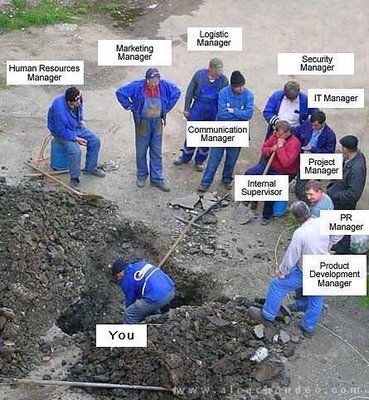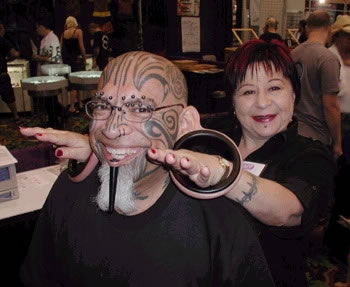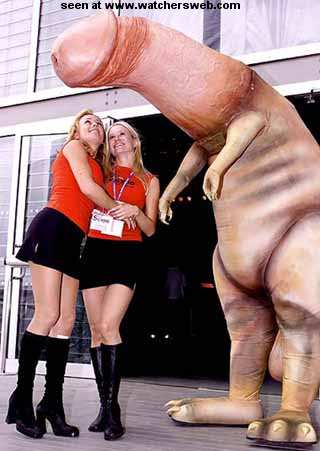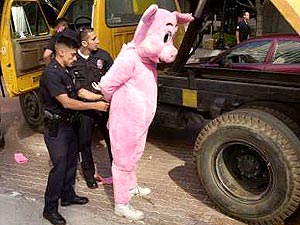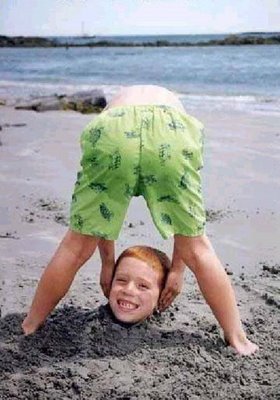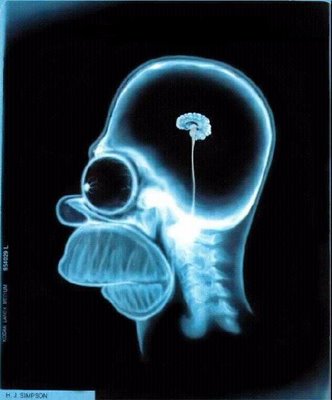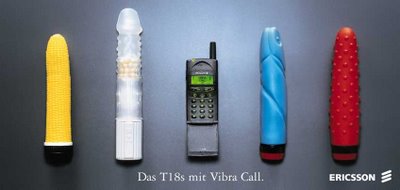Love is blind -- but in this case, so were the lovers, the waiters and all the other diners at the blind date in the dark.
Lawyer Dennis Cohen thought the "Dining in the Dark" adventure billed as a three-course gourmet meal served in a pitch black dining room by blind waiters would make for an intriguing kickoff to romance.
Held in a banquet hall at a Los Angeles hotel, the culinary and sensory event offers utter obscurity, anonymity and gourmet food -- but is not recommended for anyone scared of the dark.
"I put an ad on (online networking Web site) Craig's List talking about the place and saying, 'Wouldn't it be fun to meet on a blind date and have it be really a blind date?" Cohen told Reuters.
Diners at the once-a-week restaurant called "Opaque" are led into a pitch black dining room by the blind waiters who act as their guides for the evening.
"Oh my God, it's really dark! They're not kidding, it's really dark!" laughed waiter Michael Headley, mimicking a typical first reaction by customers.
The idea of eating dinner in utter blackness may strike many as odd, if not downright unpleasant.
But the concept has already proven popular among Europeans in cities such as Berlin, Paris, Hamburg and Zurich, and the general reaction has been enthusiastic, said Ben Uphues, the event's Los Angeles producer.
"The idea behind it is to offer the sighted person an experience they will never have in their life," Uphues said.
DARKNESS OVERWHELMS SOME DINERS
The giggles and nervous titters of people unaccustomed to the dark are eventually replaced by boisterousness as diners tackle the challenge of consuming their food in the dark -- meals are chosen beforehand in the lighted lobby.
Headley, 42, and other waiters carefully guide plates and glasses into diners' hands.
Every once in a while, Headley said, a patron will escape to the bathroom and refuse to come back to their table.
A former community center director who lost his sight two years ago from glaucoma, Headley said he couldn't find work before Uphues contacted the Braille Institute.
"This is something I could do with the skill level I had," said Headley, who enjoys serenading lucky guests with songs such as "Happy Birthday" or "When I Fall In Love." "It gave me the confidence to begin to do other things."
Besides the dinner rolls that invariably find their way to the floor, sighted guests don't leave as much of a mess at their tables as one would expect, Uphues said.
Cohen, who felt entirely comfortable in the dark, said he managed to pour champagne for his date without spilling on her but some diners found it hard to connect forks and food.
"You learn how much you rely on your eyesight for cutting food and making sure there's something on your fork," said Russ Hemmis, a real estate investor out with his girlfriend. "But at least I can pick my nose without anyone noticing."
Cohen's date, Avril Cunningham, said the darkness encouraged relating to her mysterious companion "on a different level."
Apparently it worked its magic. The couple -- who laid eyes on each other for the first time back in the lobby after the meal -- have plans for a second date.
"I'm going to make her dinner," said Cohen, adding, "I told her I would blindfold her".
20061211
20061113
T-shirt turns air guitar into music
Scientists announced Monday that they have developed a high-tech T-shirt that turns the strumming of an air guitar into music.
The T-shirt has motion sensors built into its elbows that pick up the wearer's arm motions and relay them wirelessly to a computer which interprets them as guitar riffs, said Richard Helmer, an engineer who leads the research team from the government's Australian Commonwealth Scientific and Industrial Research Organization.
One arm is interpreted as picking chords while the other strums. The "wearable instrument shirt" is adaptable to both right and left-handed would-be rock stars.
"It's an easy-to-use, virtual instrument that allows real-time music making even by players without significant musical or computing skills," Helmer said in a statement.
"It allows you to jump around and the sound generated is just like an original MP3," he added, referring to the digital audio file format.
The shift is a collaboration between CSIRO researchers in computing, chemistry, electronics, music composition and textile manufacture.
Helmer said sensors could be used in the future to reproduce a person in the virtual world so they could get feedback on their actions and improve their sporting techniques.
The T-shirt has motion sensors built into its elbows that pick up the wearer's arm motions and relay them wirelessly to a computer which interprets them as guitar riffs, said Richard Helmer, an engineer who leads the research team from the government's Australian Commonwealth Scientific and Industrial Research Organization.
One arm is interpreted as picking chords while the other strums. The "wearable instrument shirt" is adaptable to both right and left-handed would-be rock stars.
"It's an easy-to-use, virtual instrument that allows real-time music making even by players without significant musical or computing skills," Helmer said in a statement.
"It allows you to jump around and the sound generated is just like an original MP3," he added, referring to the digital audio file format.
The shift is a collaboration between CSIRO researchers in computing, chemistry, electronics, music composition and textile manufacture.
Helmer said sensors could be used in the future to reproduce a person in the virtual world so they could get feedback on their actions and improve their sporting techniques.
20061101
20061030
20061016
Oxford and Cambridge applicants face
I would like to see Oxford and Cambridge applicants face with questions like (here there are some more):
- Where's our local limestone deposit?
- Has the French Revolution ended?
- How comfortable is that chair?
- What is a tree?
- At what point is a person "dead"?
- How would you design a better brain
- What is your opinion on spontanteneous human combustion?
- Describe a potato and then compare it with an onion
- Define "greed"
- What is the meaning of life?
- Which way is the earth spinning?
20061007
Star Trek memorabilia sale a big hit in New York
Bidders, at least one them costumed, paid top dollar for Star Trek items on Thursday at the start of Christie's auction of memorabilia from the seminal television and movie franchise.
A model of the Starship Enterprise E was bought by an online bidder for $132,000 including commission, more than 10 times its $8,000 to $12,000 pre-sale estimate.
Another item, a 30-square-inch (193-square-centimeter) Borg cube model used in "Star Trek: First Contact," sold for $96,000 to a telephone bidder. Its estimated value was between $1,000 and $1,500.
"The energy was definitely beyond what I expected," said Cathy Elkies, Christie's director of special collections.
With 1,000 lots of CBS Paramount Television material on offer over three days, Christie's -- better known for Picassos and Monets than Starfleet banners and costumes -- had anticipated a total of up to $2 million.
Prices from the first session suggested the final tally could go much higher.
Enterprise Captain Jean-Luc Picard's chair sold for more than $62,000, while a 42-inch (107-cm) bazooka-style prop rifle used by Michael Dorn as Worf in "Star Trek: Insurrection" fetched $19,200 after being estimated at between $600 and $800.
The auction, which marks the 40th anniversary of the "Star Trek" phenomenon, ends on Saturday when some of the most coveted items, including costumes worn by William Shatner as Captain James T. Kirk and Leonard Nimoy as Mr. Spock from the original 1966 television series, go on the block.
A bidder who came dressed as Picard bought actor Ron Perlman's vinyl jumpsuit from "Star Trek: Nemesis" for $6,000.
"It's with Picard then," the auctioneer said during bidding, adding, "A sentence I never thought I'd say".
A model of the Starship Enterprise E was bought by an online bidder for $132,000 including commission, more than 10 times its $8,000 to $12,000 pre-sale estimate.
Another item, a 30-square-inch (193-square-centimeter) Borg cube model used in "Star Trek: First Contact," sold for $96,000 to a telephone bidder. Its estimated value was between $1,000 and $1,500.
"The energy was definitely beyond what I expected," said Cathy Elkies, Christie's director of special collections.
With 1,000 lots of CBS Paramount Television material on offer over three days, Christie's -- better known for Picassos and Monets than Starfleet banners and costumes -- had anticipated a total of up to $2 million.
Prices from the first session suggested the final tally could go much higher.
Enterprise Captain Jean-Luc Picard's chair sold for more than $62,000, while a 42-inch (107-cm) bazooka-style prop rifle used by Michael Dorn as Worf in "Star Trek: Insurrection" fetched $19,200 after being estimated at between $600 and $800.
The auction, which marks the 40th anniversary of the "Star Trek" phenomenon, ends on Saturday when some of the most coveted items, including costumes worn by William Shatner as Captain James T. Kirk and Leonard Nimoy as Mr. Spock from the original 1966 television series, go on the block.
A bidder who came dressed as Picard bought actor Ron Perlman's vinyl jumpsuit from "Star Trek: Nemesis" for $6,000.
"It's with Picard then," the auctioneer said during bidding, adding, "A sentence I never thought I'd say".
20061006
Stinky feet, annoying noise top IgNobel prize list
Research into stinky feet, a study on the sound of fingernails on a blackboard and a device that repels teen-agers with an annoying high-pitched hum on Thursday won IgNobel prizes -- the humorous counterpart to this week's Nobel prizes.
Other winning research included a U.S. and Israeli team's discovery that hiccups could be cured with a finger up the rectum and a study into why woodpeckers do not get headaches.
"The prizes are intended to celebrate the unusual, honor the imaginative -- and spur people's interest in science, medicine and technology," said Marc Abrahams, editor of the science humor magazine "Annals of Improbable Research," which sponsors the awards with the Harvard-Radcliffe Science Fiction Association and Harvard-Radcliffe Society of Physics Students.
All the research is real and has been published in often-prestigious scientific and medical journals. However, unlike the Nobel prizes awarded this week by the Swedish Academy of Sciences, IgNobel winners receive no money, little recognition and have virtually no hope of transforming science or medicine.
Even the name of the award, a play on the word "ignoble," is meant to be deprecating.
But they receive their awards from real Nobel winners in an event broadcast on the Internet at http://www.improbable.com on Thursday evening.
Some of the 2006 IgNobel winners:
-- BIOLOGY - Bart Knols of Wageningen Agricultural University in the Netherlands, the National Institute for Medical Research in Tanzania and the International Atomic Energy Agency in Vienna, Austria and colleague Ruurd de Jong for showing that the female Anopheles gambiae mosquito, which carries malaria, is attracted equally to the smell of limburger cheese and to the smell of human feet.
"We have shown that three different Anopheles mosquito species prefer to bite different parts of a naked motionless volunteer and that this behavior is influenced by odors from those body regions," they wrote in their report, published in the Lancet medical journal in 1996.
-- ORNITHOLOGY - Ivan Schwab of the University of California Davis, and the late Philip R.A. May of the University of California Los Angeles, for explaining why woodpeckers do not get headaches.
-- NUTRITION - Wasmia Al-Houty of Kuwait University and Faten Al-Mussalam of the Kuwait Environment Public Authority, for showing that dung beetles are finicky eaters.
-- PEACE - Howard Stapleton of Merthyr Tydfil, Wales, for inventing a teen-ager repellent -- a device that makes a high-pitched noise that is annoying to teen-agers but inaudible to most adults; and for later using the technology to make cellphone ringtones that teenagers can hear but not their teachers.
-- ACOUSTICS - D. Lynn Halpern, Randolph Blake and James Hillenbrand of Chicago's Northwestern University for a 1986 experiment aimed at discovering why the sound of fingernails scraping on a blackboard is so irritating.
-- MEDICINE - Francis Fesmire of the University of Tennessee College of Medicine and the team of Majed Odeh, Harry Bassan and Arie Oliven of Bnai Zion Medical Center in Haifa,
Israel who both published studies entitled "Termination of Intractable Hiccups with Digital Rectal Massage."
-- MATHEMATICS - Nic Svenson and Piers Barnes of the Australian Commonwealth Scientific and Research Organization, for calculating the number of shots a photographer must take to almost ensure that nobody in a group photo will have their eyes closed.
Other winning research included a U.S. and Israeli team's discovery that hiccups could be cured with a finger up the rectum and a study into why woodpeckers do not get headaches.
"The prizes are intended to celebrate the unusual, honor the imaginative -- and spur people's interest in science, medicine and technology," said Marc Abrahams, editor of the science humor magazine "Annals of Improbable Research," which sponsors the awards with the Harvard-Radcliffe Science Fiction Association and Harvard-Radcliffe Society of Physics Students.
All the research is real and has been published in often-prestigious scientific and medical journals. However, unlike the Nobel prizes awarded this week by the Swedish Academy of Sciences, IgNobel winners receive no money, little recognition and have virtually no hope of transforming science or medicine.
Even the name of the award, a play on the word "ignoble," is meant to be deprecating.
But they receive their awards from real Nobel winners in an event broadcast on the Internet at http://www.improbable.com on Thursday evening.
Some of the 2006 IgNobel winners:
-- BIOLOGY - Bart Knols of Wageningen Agricultural University in the Netherlands, the National Institute for Medical Research in Tanzania and the International Atomic Energy Agency in Vienna, Austria and colleague Ruurd de Jong for showing that the female Anopheles gambiae mosquito, which carries malaria, is attracted equally to the smell of limburger cheese and to the smell of human feet.
"We have shown that three different Anopheles mosquito species prefer to bite different parts of a naked motionless volunteer and that this behavior is influenced by odors from those body regions," they wrote in their report, published in the Lancet medical journal in 1996.
-- ORNITHOLOGY - Ivan Schwab of the University of California Davis, and the late Philip R.A. May of the University of California Los Angeles, for explaining why woodpeckers do not get headaches.
-- NUTRITION - Wasmia Al-Houty of Kuwait University and Faten Al-Mussalam of the Kuwait Environment Public Authority, for showing that dung beetles are finicky eaters.
-- PEACE - Howard Stapleton of Merthyr Tydfil, Wales, for inventing a teen-ager repellent -- a device that makes a high-pitched noise that is annoying to teen-agers but inaudible to most adults; and for later using the technology to make cellphone ringtones that teenagers can hear but not their teachers.
-- ACOUSTICS - D. Lynn Halpern, Randolph Blake and James Hillenbrand of Chicago's Northwestern University for a 1986 experiment aimed at discovering why the sound of fingernails scraping on a blackboard is so irritating.
-- MEDICINE - Francis Fesmire of the University of Tennessee College of Medicine and the team of Majed Odeh, Harry Bassan and Arie Oliven of Bnai Zion Medical Center in Haifa,
Israel who both published studies entitled "Termination of Intractable Hiccups with Digital Rectal Massage."
-- MATHEMATICS - Nic Svenson and Piers Barnes of the Australian Commonwealth Scientific and Research Organization, for calculating the number of shots a photographer must take to almost ensure that nobody in a group photo will have their eyes closed.
20060925
20060915
20060906
20060903
20060825
20060819
Woman accused of heroin-soaked panties
A Chinese woman has appeared in court accused of transporting panties and long johns soaked in heroin, state media said Friday.
Wang Zhiqin, 42, from Wuhan, capital of China's central province of Hubei, was charged with transporting 1.44 kg (3.2lb) of heroin soaked into 15 items of underwear, the China Daily said.
"Drug tests apparently detected heroin on them and Wang was arrested after a tip-off," the China Daily said.
Wang pleaded innocent during her trial at a Shanghai court Thursday, saying the tainted underwear had been planted in her luggage, a pink trunk, after two men in Kunming, capital of the southwestern Yunnan province, offered her a job and a plane ticket to Shanghai.
Wang's lawyer queried the investigating police's methods, who derived the quantity of heroin by weighing the drug-soaked underwear, the paper said.
"There is no evidence of the exact purity and quantity of the heroin, and there is no evidence proving Wang was aware of what she was carrying," the paper quoted the lawyer as saying.
If convicted, Wang could face the death penalty, the paper said.
The trial continues.
Wang Zhiqin, 42, from Wuhan, capital of China's central province of Hubei, was charged with transporting 1.44 kg (3.2lb) of heroin soaked into 15 items of underwear, the China Daily said.
"Drug tests apparently detected heroin on them and Wang was arrested after a tip-off," the China Daily said.
Wang pleaded innocent during her trial at a Shanghai court Thursday, saying the tainted underwear had been planted in her luggage, a pink trunk, after two men in Kunming, capital of the southwestern Yunnan province, offered her a job and a plane ticket to Shanghai.
Wang's lawyer queried the investigating police's methods, who derived the quantity of heroin by weighing the drug-soaked underwear, the paper said.
"There is no evidence of the exact purity and quantity of the heroin, and there is no evidence proving Wang was aware of what she was carrying," the paper quoted the lawyer as saying.
If convicted, Wang could face the death penalty, the paper said.
The trial continues.
20060804
20060726
The 10 worst technologies in Q2 2006
The 10 worst technologies in Q2 2006
There's the link to the first one. Then you can surf (numbers above the pic) and see is you have (possibly) suffered one of them. Enjoy the reading.. it's funny. ¡Engineers!
There's the link to the first one. Then you can surf (numbers above the pic) and see is you have (possibly) suffered one of them. Enjoy the reading.. it's funny. ¡Engineers!
20060721
20060610
20060530
20060517
20060503
20060427
20060422
20060415
20060409
20060317
20060313
Subscribe to:
Posts (Atom)


